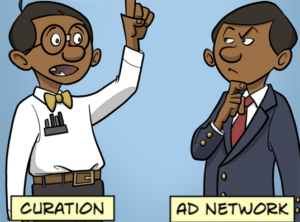 “Data-Driven Thinking” is written by members of the media community and contains fresh ideas on the digital revolution in media.
“Data-Driven Thinking” is written by members of the media community and contains fresh ideas on the digital revolution in media.
Today’s column is written by James O’Connor, head of programmatic at Kiip.
Our industry has taken great strides improving transparency in recent years, and it’s about to do so again with the IAB’s release of OpenRTB 3.0, the largest overhaul of the OpenRTB protocol since its inception in 2010.
But even with these security and transparency enhancements, the programmatic industry shouldn’t rest on its laurels. There’s still a lot of work to be done.
Many of the programmatic space’s recent transparency advances were made to instill trust in programmatic media and keep those investments flowing.
But the industry has overlooked some transparency improvements that could go a long way in not just increasing confidence in programmatic, but also performance.
I see three areas where greater visibility could translate to better use of programmatic media dollars and improved relationships between the buy and sell sides.
Decisioning insights
Demand-side platform (DSP) decisioning insights largely exist within a black box. Whether in an open or private marketplace environment, DSPs bid based on criteria that often includes multiple targeting layers, including age, gender, location, cookies or device IDs. A DSP responds to a bid request because it met the defined criteria.
However, when a DSP does not respond to a bid request, there’s no feedback why. Where did the targeting break down? At the demographic level? Location? Providing feedback would let the supply side better understand what demand looks like, enabling more informed strategies for the future.
Improved troubleshooting insights
The programmatic space lacks a lot of information around deal ID performance. The supply side wastes hours and money troubleshooting deal IDs and scaling them up. Sometimes the targeting criteria doesn’t match up. But it’s also possible for other things to go wrong.
Is the DSP not receiving the requests? Are web cookies being targeted on an in-app inventory deal? It’s currently hard to know. Some DSPs and exchanges provide greater troubleshooting assistance, such as Rubicon’s Deal Health report or DoubleClick’s Deal Check feature. However, further and more widespread advances in this type of feedback would go a long way to reducing time lost to deal ID troubleshooting.
Post-click performance and conversions
Finally, and perhaps most importantly, the supply side has little transparency of campaign performance. While a managed-service campaign can provide full-funnel visibility into any engagement or conversion post-click, suppliers lose insight into anything that happens after the click in most programmatic buys.
Clicks are rarely the most meaningful KPI for an advertiser these days. Campaign performance is more likely to be judged based on actions that occur after or in absence of a click, like downloads or sales. Since publishers can’t account for these outcomes, they are in the dark about what is and isn’t working for their advertisers. That puts both the publisher and the advertiser at a disadvantage. Enabling greater outcome visibility within programmatic media would help to drive closer partnerships and more effective working relationships between publishers and advertisers.
The programmatic space continues to evolve rapidly, and its black boxes are gradually becoming less opaque. As trust concerns diminish, the programmatic industry must focus on enabling visibility to improve performance and relationships for the future.
Follow Kiip (@kiip) and AdExchanger (@adexchanger) on Twitter.











